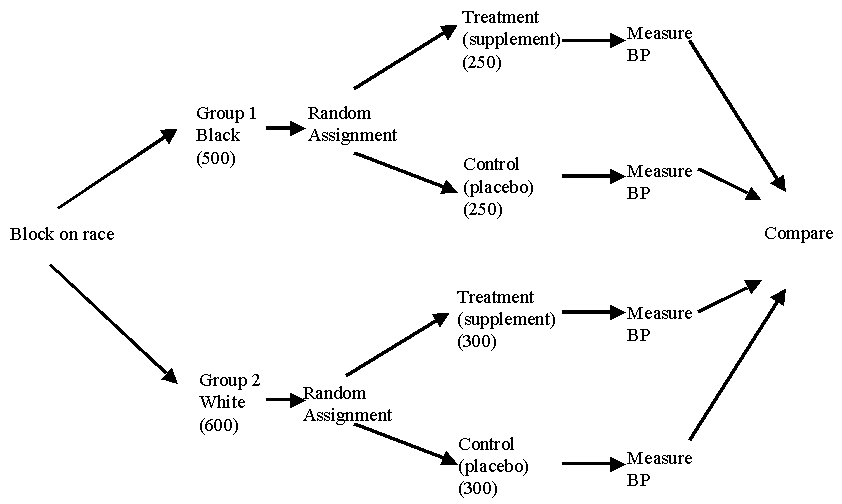
Answers to Practice Test on Chapter 5
posted 11/15/1999
Test will be given in periods D and F on Tuesday, 11/16/1999.
|
1. |
d |
|
2. |
a |
|
3. |
c |
|
4. |
c |
|
5. |
a |
|
6. |
not an experiment (no treatment imposed); it is a public opinion survey |
|
7. |
Sample: 150 Richmonders. Population: all people living in Richmond. |
|
8. |
Yes. The treatment imposed was taking extra-strength aspirin and then drinking alcohol an hour later. |
|
9. |
No. The 5 subjects were volunteers. |
|
10. |
This is a matched pairs design. There are two weaknesses: (1) Small sample size of 5 will tend to give highly variable results. Larger sample size (say, 25) would give results that were less variable. (2) Volunteers, as a group, may have characteristics that differ from the population and thus create bias. It is better to select subjects randomly. |
|
11. |
Bias: wording of question. This wording will tend to produce a higher response in favor of gun ownership. The 91% sample proportion is higher than the true population proportion. |
|
12. |
Bias: undercoverage. The survey misses people who are gone during the day, plus the small percentage of people without telephones. The former are less likely to bake and the latter (possibly) more likely to bake than the population as a whole. Overall the sample proportion will probably be higher than the true population proportion. (There is also a possibility of response bias, since people at home during the day may lie about baking if they feel guilty and think they should be doing something while at home. This is a stretch, though. Undercoverage is the main bias here.) |
|
13. |
Several methods are possible. One is to let digits 1-4 denote apartment dwellers, with 1-3 denoting those who deadbolt their doors in addition to locking them, and 4 denoting those who do not deadbolt. Ignore all other digits. Start anywhere in the random digit table and record the first 20 digits that are in the range 1-4. |
|
14. |
Starting at line 127, the 20 simulated apartment dwellers are 43423 34341 21131 11422, where underlined numbers denote apartment dwellers who deadbolt. The sample proportion is 15/20 = 0.75. (Note that although the sample proportion happens to be 0.75 in this case, that need not be true in general.) |
|
15. |
It would be logical to block on race and randomly assign treatment or nontreatment within each block (i.e., randomized block design) because we have evidence that the supplement has a greater effect on black men than on white men. [If speaking to non-statisticians, you should definitely go one sentence further with your explanation and say that the purpose of block design is to reduce variation within each block, thus making the treatmentís effect, if any, stand out more clearly.] |
|
16. |
See diagram below. |
|
17. |
From an alphabetized list of the 600 whites, label them 001-600. From line 134 of the random digit table, the first 5 whites selected would be assigned to the treatment group as follows: 278, 167, 329, 213, and 373. Number blacks 001-500. The first 5 blacks selected from line 142 and assigned to the treatment group are 295, 023, 297, 087, and 248. |
